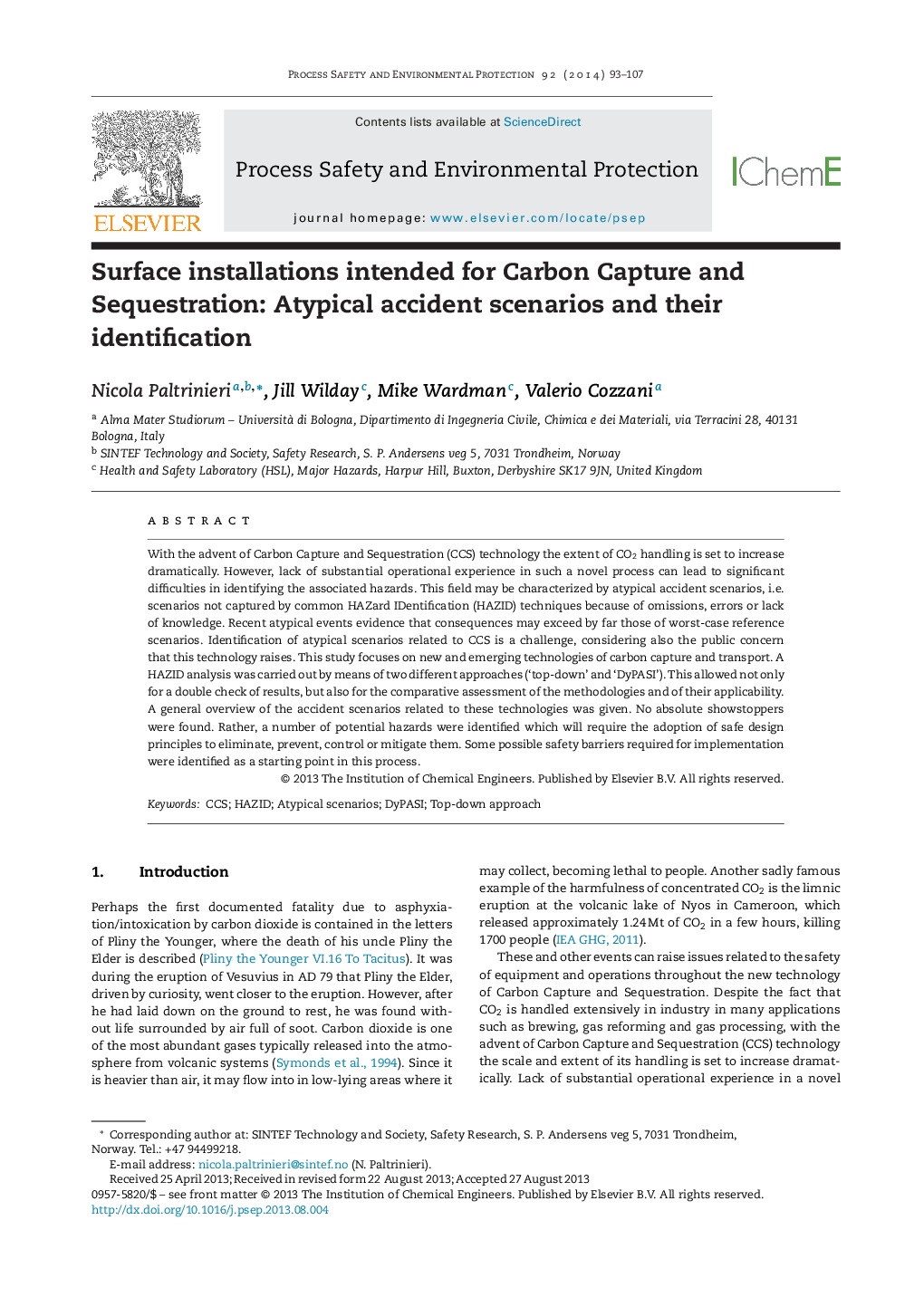| Article ID | Journal | Published Year | Pages | File Type |
|---|---|---|---|---|
| 10373888 | Process Safety and Environmental Protection | 2014 | 15 Pages |
Abstract
With the advent of Carbon Capture and Sequestration (CCS) technology the extent of CO2 handling is set to increase dramatically. However, lack of substantial operational experience in such a novel process can lead to significant difficulties in identifying the associated hazards. This field may be characterized by atypical accident scenarios, i.e. scenarios not captured by common HAZard IDentification (HAZID) techniques because of omissions, errors or lack of knowledge. Recent atypical events evidence that consequences may exceed by far those of worst-case reference scenarios. Identification of atypical scenarios related to CCS is a challenge, considering also the public concern that this technology raises. This study focuses on new and emerging technologies of carbon capture and transport. A HAZID analysis was carried out by means of two different approaches ('top-down' and 'DyPASI'). This allowed not only for a double check of results, but also for the comparative assessment of the methodologies and of their applicability. A general overview of the accident scenarios related to these technologies was given. No absolute showstoppers were found. Rather, a number of potential hazards were identified which will require the adoption of safe design principles to eliminate, prevent, control or mitigate them. Some possible safety barriers required for implementation were identified as a starting point in this process.
Keywords
Related Topics
Physical Sciences and Engineering
Chemical Engineering
Chemical Health and Safety
Authors
Nicola Paltrinieri, Jill Wilday, Mike Wardman, Valerio Cozzani,
